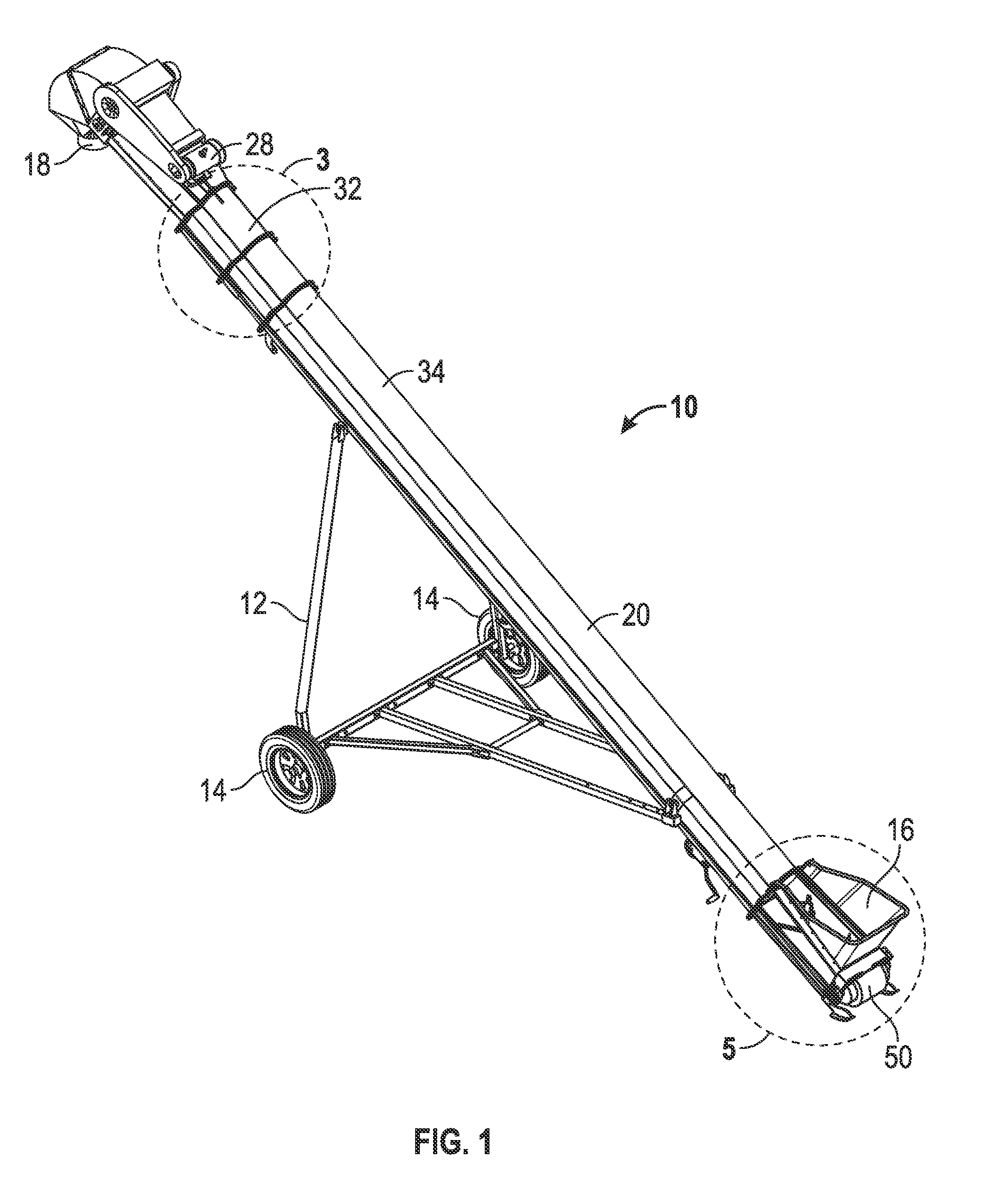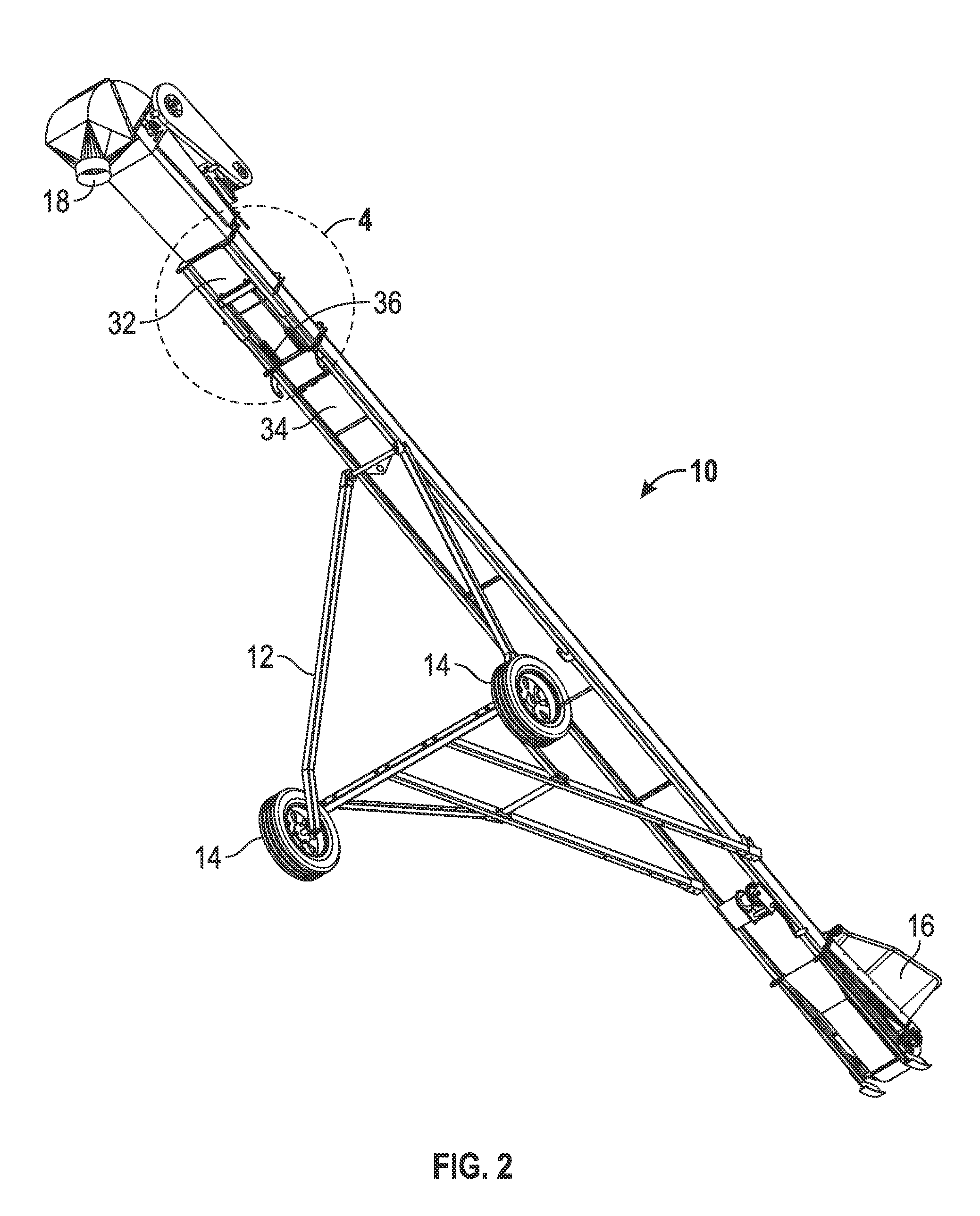Belt conveyor
a belt conveyor and belt technology, applied in the direction of conveyors, conveyor parts, cleaning, etc., can solve the problems of wasteful seed or grain loss, waste of seed or grain, and high cost of prior art belt conveyors, and achieve the effect of minimizing or eliminating the risk of residual seeds or grains contaminating different hybrids
- Summary
- Abstract
- Description
- Claims
- Application Information
AI Technical Summary
Benefits of technology
Problems solved by technology
Method used
Image
Examples
Embodiment Construction
[0026]A belt conveyor assembly, according to the present invention, is generally designated by the reference numeral 10 in the drawings. The conveyor assembly 10 includes a base 12 with wheels 14 such that the assembly 10 is portable. The conveyor assembly 10 includes an inlet hopper 16 for receiving particulate material, such as seed or grain, and an outlet 18 for discharging the material from the conveyor assembly 10.
[0027]The conveyor assembly 10 also includes an elongated housing 20 through which a conveyor belt 22 extends. Pulleys are rotatably supported at the inlet and outlet ends of the housing 20. The belt 22 is trained about the pulleys, with one of the pulleys being driven by a motor 28. Each pulley is rotatably mounted on an axle 30, which is fixed relative to the respective inlet and outlet ends of the housing 20, as best seen in FIGS. 5, 6, and 10.
[0028]The housing 20 includes an upper section 32 and a lower section 34 which are telescopically coupled so that at least ...
PUM
 Login to View More
Login to View More Abstract
Description
Claims
Application Information
 Login to View More
Login to View More - R&D
- Intellectual Property
- Life Sciences
- Materials
- Tech Scout
- Unparalleled Data Quality
- Higher Quality Content
- 60% Fewer Hallucinations
Browse by: Latest US Patents, China's latest patents, Technical Efficacy Thesaurus, Application Domain, Technology Topic, Popular Technical Reports.
© 2025 PatSnap. All rights reserved.Legal|Privacy policy|Modern Slavery Act Transparency Statement|Sitemap|About US| Contact US: help@patsnap.com



